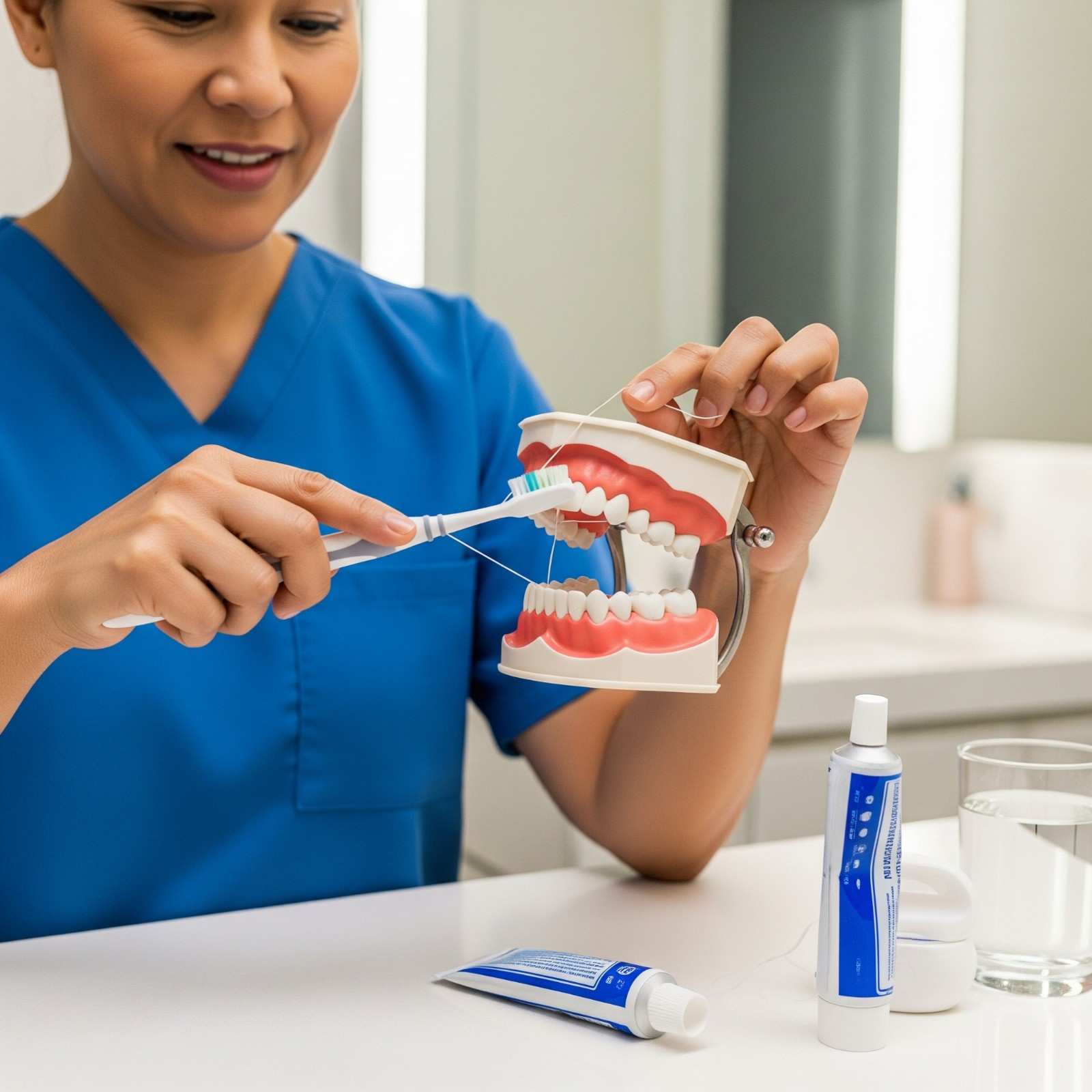At The Dental Place, we know that brushing and flossing are the foundation of a healthy smile. But here’s a question we often ask our patients: Are you actually doing it the right way?
Even the most dedicated daily brushers can make small mistakes that lead to plaque buildup, cavities, and gum problems. The good news? A few simple changes in your technique can make a big difference in protecting your teeth and gums for life.
Why Proper Brushing and Flossing Matter
Brushing removes plaque—a sticky film of bacteria—that causes cavities, bad breath, and gum disease. Flossing clears away food particles and plaque between teeth, where a toothbrush simply can’t reach. Doing both correctly is the key to preventing most dental problems before they start.
Think of brushing as cleaning the surfaces of your teeth and flossing as cleaning the spaces in between. Skipping either step is like showering but forgetting to wash behind your ears—it might look fine at first, but bacteria will still be lurking.
Step-by-Step Guide to Brushing the Right Way
- Choose the Right Toothbrush
- Use a soft-bristled brush to avoid damaging your enamel and gums.
- Pick a brush head that fits comfortably in your mouth, allowing you to reach every tooth.
- Electric toothbrushes can be especially effective, but a manual brush works just as well if used properly.
- Pick the Right Toothpaste
- Look for fluoride toothpaste—it strengthens enamel and helps prevent decay.
- If you have sensitivity or gum issues, your dentist can recommend a specialized formula.
- Brush for Two Minutes
- Spend 30 seconds per quadrant of your mouth (upper right, upper left, lower right, lower left).
- Set a timer or hum a song to make sure you hit the two-minute mark.
- Use the Proper Technique
- Hold your toothbrush at a 45-degree angle to your gums.
- Use short, gentle strokes, not hard scrubbing.
- Brush the outer surfaces, then the inner surfaces, and finally the chewing surfaces of your teeth.
- Don’t forget your tongue—it harbors bacteria that cause bad breath.
- Replace Your Toothbrush Regularly
- Swap it out every 3–4 months or sooner if the bristles are frayed.
- A worn-out brush won’t clean effectively.
Step-by-Step Guide to Flossing the Right Way
- Use Enough Floss
- Cut about 18 inches of floss.
- Wrap most of it around your middle fingers, leaving 1–2 inches to work with.
- Be Gentle but Thorough
- Slide the floss gently between your teeth using a sawing motion—never snap it down, as this can hurt your gums.
- Form a “C” Shape
- Curve the floss around each tooth in a “C” shape.
- Slide it under the gumline and move it up and down to remove plaque.
- Use a Fresh Section for Each Tooth
- Unwind clean floss as you move from tooth to tooth to avoid spreading bacteria.
- Don’t Forget the Back Teeth
- Even if you don’t see food stuck there, bacteria can still hide.
Common Brushing & Flossing Mistakes to Avoid
- Brushing too hard – This can wear away enamel and cause gum recession.
- Skipping flossing – Brushing alone cleans only about 60% of your tooth surfaces.
- Using old, frayed brushes – They lose cleaning power.
- Rushing the process – Quick brushing often misses plaque in tricky spots.
When to Brush and Floss
- Brush twice a day—once in the morning and once before bed.
- Floss at least once a day, preferably before bedtime so your mouth stays clean overnight.
- If you eat sugary or acidic foods, wait 30 minutes before brushing to avoid enamel erosion.
Why Technique Matters More Than Tools
While high-tech brushes, flavored floss, and whitening toothpaste can be great, the real secret to a healthy smile is consistent and proper technique. You could own the most expensive toothbrush on the market, but if you’re rushing or skipping steps, plaque and tartar will still build up.
Your Dentist: The Final Checkpoint
Even with perfect home care, you still need professional checkups every six months. At The Dental Place, we can spot problems early, remove hardened tartar, and make sure your brushing and flossing techniques are truly effective.
During your visit, we’re happy to:
- Demonstrate the correct brushing and flossing motion.
- Recommend tools like water flossers or interdental brushes if you have braces or gaps.
- Personalize tips based on your unique dental health needs.
Final Thoughts
Brushing and flossing are simple habits, but doing them correctly is what keeps your teeth healthy, your gums strong, and your smile bright. Think of your toothbrush and floss as the front-line defense against dental problems—use them wisely, and they’ll protect you for a lifetime.
If you have any questions about your technique—or just want to make sure you’re doing it right—schedule an appointment with The Dental Place today. Your smile deserves it!




